“A premonition of a horror film” Outer Space (Peter Tscherkassky, 1999)
Oct
26

Barbara Hershey as Carla Moran. DP of The Entity: Stephen H. Burum.
[Favourite] psychological horror*
– tagline
Real horror is not found in broken dinner plates or corpuscular masses of light. It's in what the mind does with that input, in how those lux morph into human-like shapes. In how gusts of wind becomes larynx-touched voices. Cut up the neatly filed research papers and be left with the whispers of the mind.
* the Bales 2025 Film Challenge for October is horror-themed as opposed to date-based, and is all about favourites. Expect non-horror and films I believe to be relevant instead.
AvantGarde
狂った一頁 [Kurutta ichipėji / A Page of Madness] (Teinosuke Kinugasa, 1926)
Oct
14
silent cinema
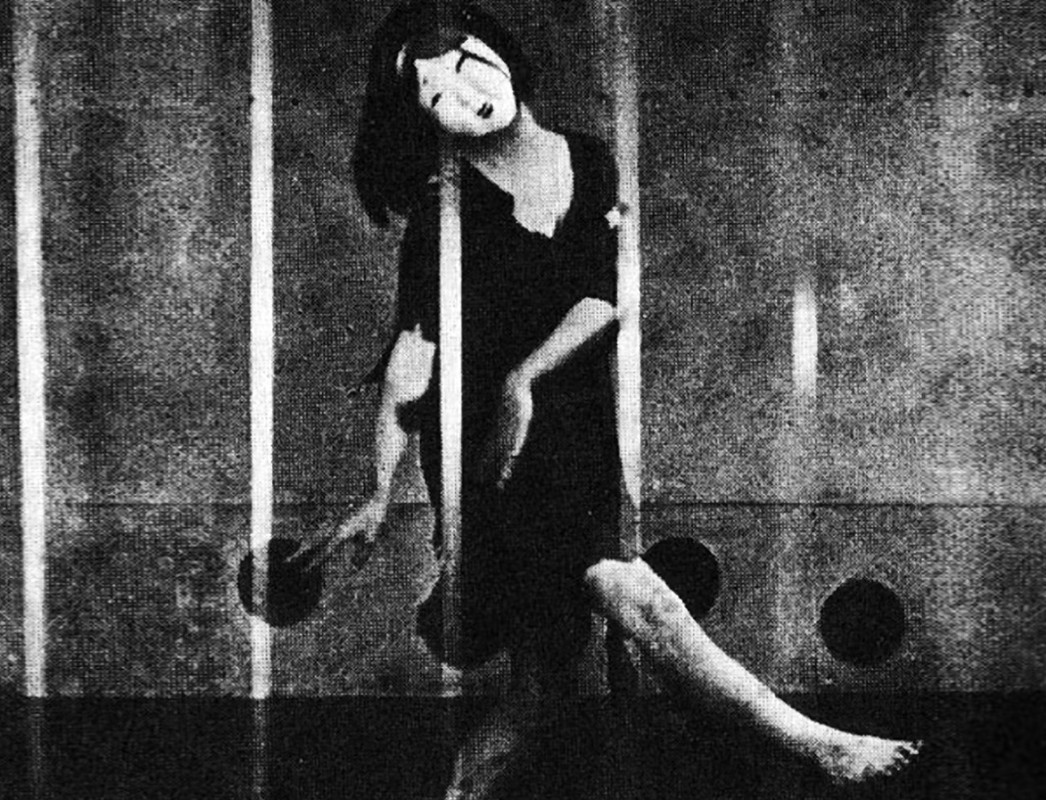
A masked inmate (Eiko Minami) dances. The shot of the dancer is superimposed over a shot of her cel's bars, putting the viewer in the position of the husband witnessing – or is he hallucinating – an inescapable nightmare (via). DP: Kōhei Sugiyama.
A [favourite] silent horror film*
Incomplete and, despite the generally accepted popular Occidental opinion, not a horror film. Oh, to have seen this narrated by Musei Tokugawa…
* the Bales 2025 Film Challenge for October is horror-themed as opposed to date-based, and is all about favourites. Expect non-horror and films I believe to be relevant instead.
“What I sought in 'Pacific' was not the imitation of the sounds of the locomotive, but the translation of a visual impression and a physical enjoyment through a musical construction. It starts from objective contemplation: the quiet breathing of the engine at rest, the effort of starting, then the progressive increase in speed, to arrive at the lyrical state, the pathos of the 300-ton train, launched in the middle of the night at 120 km/h.” Пасифик 231 [Pasifik 231 / Pacific 231] (Mikhail Tsekhanovskiy, 1931)
Jul
2
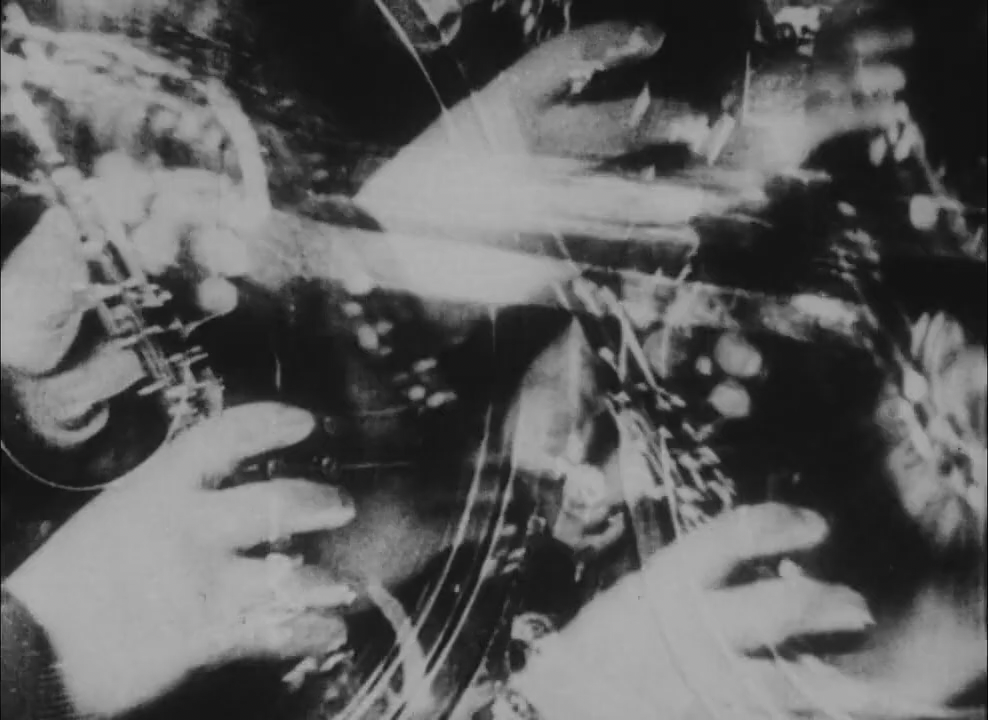
Musicians superimposed over the locomotive's pistons. DP: Leonid Patlis.
A mode of transportation to get me to my ideal vacation destination*. And yes, I would travel to an island by transcontinental locomotive
– Arthur Honegger, Dissonances. Revue musicale indépendante (1925) (via)
Hinted on in Abel Gance's La Roue (1923), composer Arthur Honegger's Пасифик 231 follows the narrative of a stream train ploughing through the night. The conductor's gestures mirror the fireman's and slowly, the machine comes to live. The music becomes abstract, machine-like, in its rendition of pistons and valves. Using double exposure and Soviet montage theory, music and movement become one. The Futurists, if not opposed to the Soviets that is, would have had a field day with this outing.
* the Bales 2025 Film Challenge for July is, for unknown reasons, mostly not date-related and follows some sort of vacation narrative.
“But this art of total synthesis that is Cinema, this fabulous newborn of Machine and Sentiment, is beginning to cease its moans and is entering its infancy. Its adolescence will soon arrive, seize its intelligence, and multiply its dreams; we ask that we hasten its development, precipitate the advent of its youth. We need Cinema to create the total art toward which the other arts have always tended.“Combat de boxe (Charles Dekeukeleire, 1927)
Jun
30
Mike Tyson – 1966
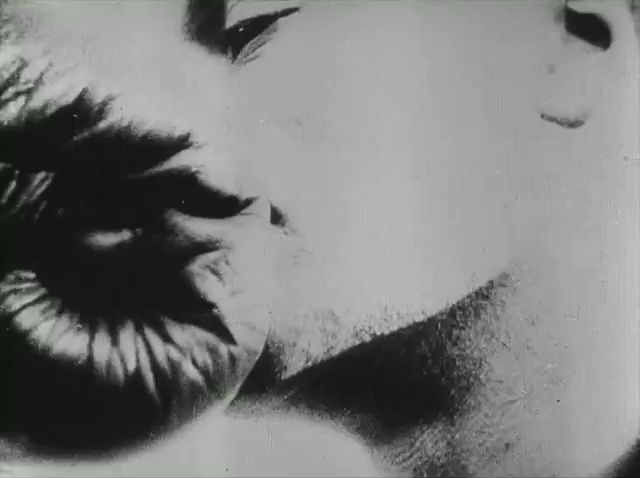
One of the fighters receives a direct hit. The camera is so close that we see abstract shapes, texture and contrast before recognising the scene. DP: Antoine Castille.
A [favourite] athlete in a film role for Mike Tyson's birthday
– Ricciotto Canudo, Gazette des sept arts, 1923 (via)
The match you see is real, between two actual fighters. Paul Werrie's rhythmic poem served as the basis. Everything else is illusion made flesh with what was available. An empty painter's studio, a few friends, footage of a crowd, a deep comprehension of the Kuleshov effect and rapid Soviet-style editing. Dekeukeleire places us from the safe world of the spectator right in the line of fire. But there's no release like in James Williamson's The Big Swallow (1901). Without that gimmick, cinema enters Canudo's realm, as the seventh art.
“In this film, by showing certain basic aspects of a city, a way of life is put on trial… the last gasps of a society so lost in its escapism that it sickens you and makes you sympathetic to a revolutionary solution.”À propos de Nice – point de vue documenté [À propos de Nice] (Boris Kaufman + Jean Vigo, 1930)
Jan
1
New Year's Day
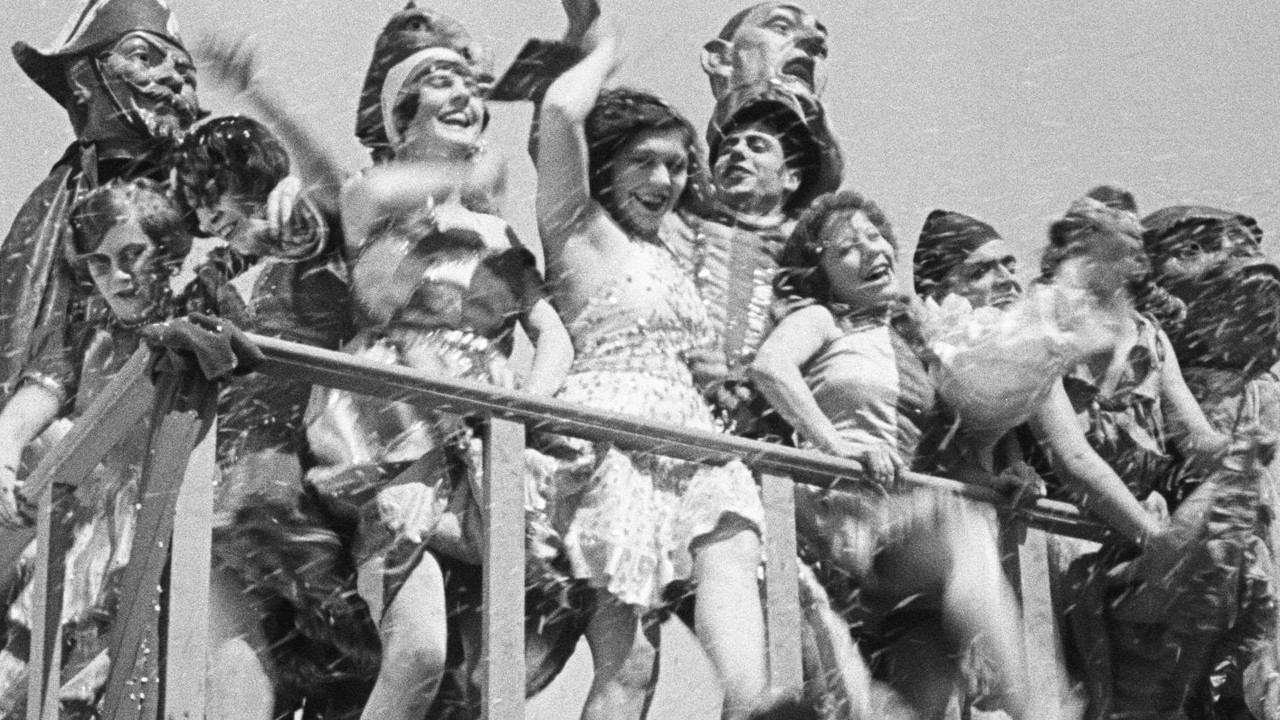
Exuberant prostitutes, Jean Vigo (5th from the left), and some who appear to be men in drag, dance on a landing with confetti all around them. In the moving footage they can be seen high-kicking with increased vulgarity, the camera posed below them. DP: Boris Kaufman.
Confetti for New Year's Day.
– Jean Vigo in his manifesto Vers un cinéma social
The End (Christopher Maclaine, 1953)
Nov
13
ice cream

A man suggestively licks an ice cream cone. DP: Jordan Belson.
Hägringen [Mirage] (Peter Weiss, 1959)
Feb
12
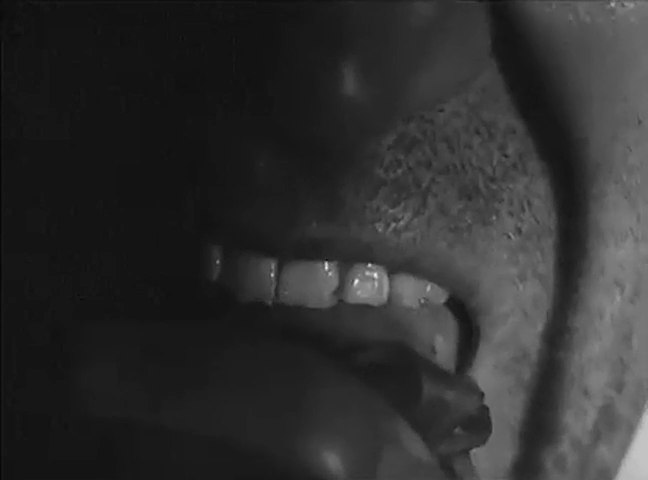
An uncomfortably close close-up up of a man's mouth eating something. Tongue and mouth are visible. He's got stubble. DP: Gustaf Mandal.
“Inflammable desires dampened by day under the cold water of consciousness are ignited that night by the libertarian matches of sleep, and burst forth in showers of shimmering incandescence.”Fireworks (Kenneth Anger, 1947)
Dec
8
National Christmas Tree Day
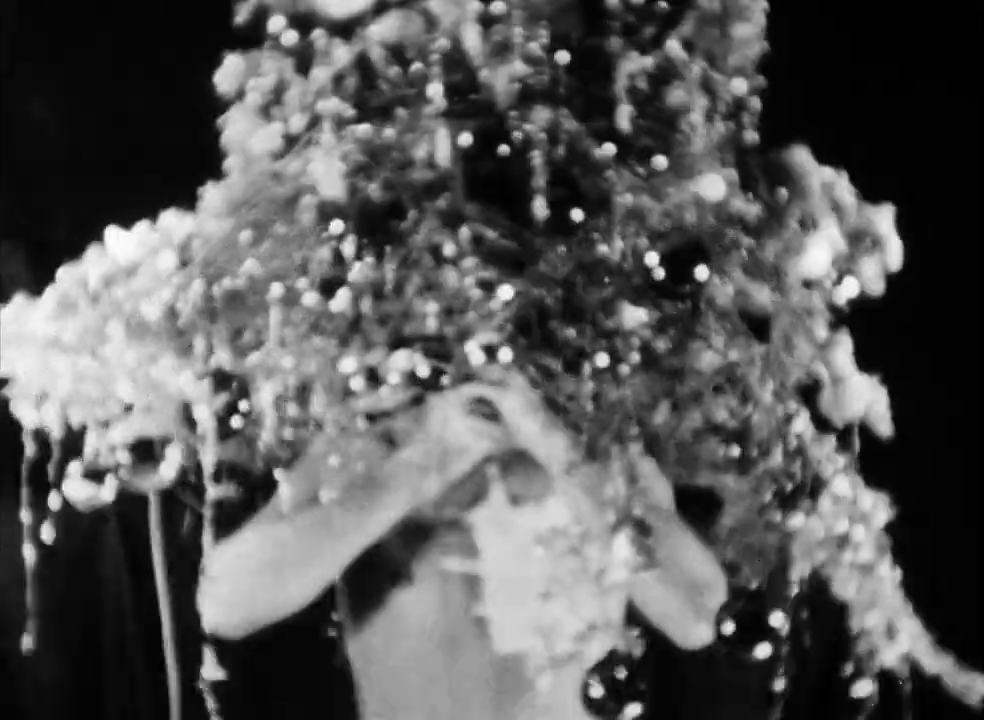
The Dreamer (Kenneth Anger) holding a tinsel-decked Christmas tree in front of his naked upper body. The scene appears to foreshadow Yvonne Marquis getting into her silver dress in Anger's Puce Moment (1949).
A Christmas tree for National Christmas Tree Day (USA)
In August 1942, a Mexican-American man with a broken finger was found semiconscious near Sleepy Lagoon, Ca.. By association, a group of young Latinos was put on trial. This spark, mere months after Roosevelt sent thousands of Japanese Americans to concentration camps and fuelled by Cold War paranoia, eventually set off the Zoot Suit Riots.
Zoot Suiters or Pachucos and other “outsiders” like African, Italian and Filipino Americans, were viciously attacked by Anglo-American #sailors. Those suits, all that fabric, this colourful extravagance, they cried out, were hampering the war effort.
– The Dreamer
The Dreamer, Anger, dreams of a similar violent attack. The sadism is harrowing, filmed with such exquisite eye that it's impossible to look away. Blood finds its way out, pulsating and spurting. Ambiguous glances. A hand, no finger. A young man awakes, is born. The dreamer is still asleep.
狂つた一頁 [Kurutta ippēji / A Page of Madness] (Teinosuke Kinugasa, 1926)
Sep
12
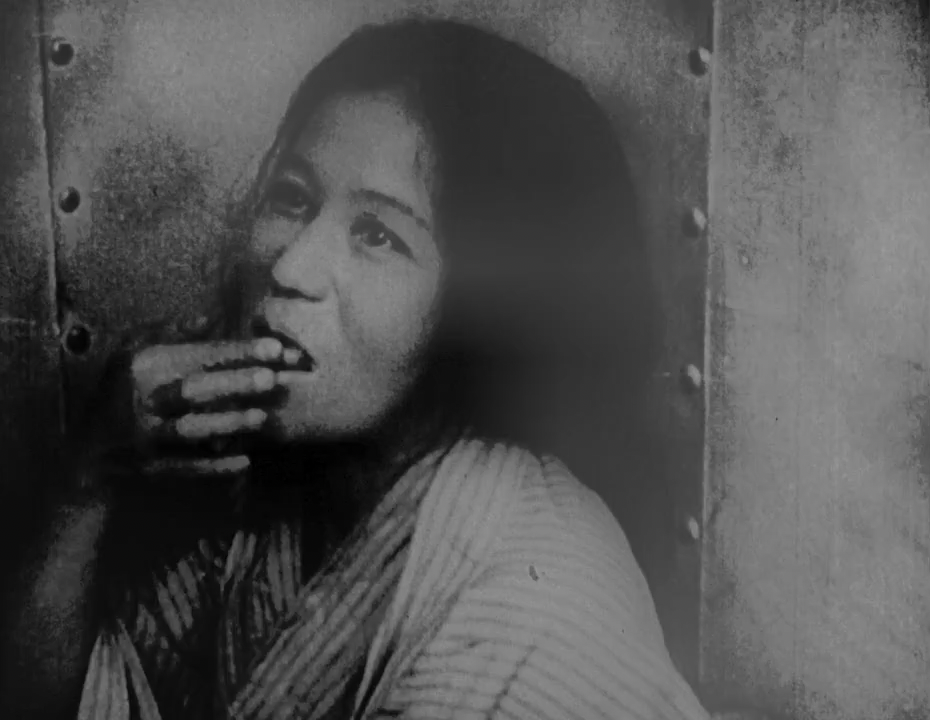
The servant's wife (Yoshie Nakagawa) eating. She looks up at someone offscreen, and smiles. DP: Kōhei Sugiyama.
Taris, roi de l'eau [Taris, King of the Water] (Jean Vigo, 1931)
Jul
12
freebie: Swim A Lap Day
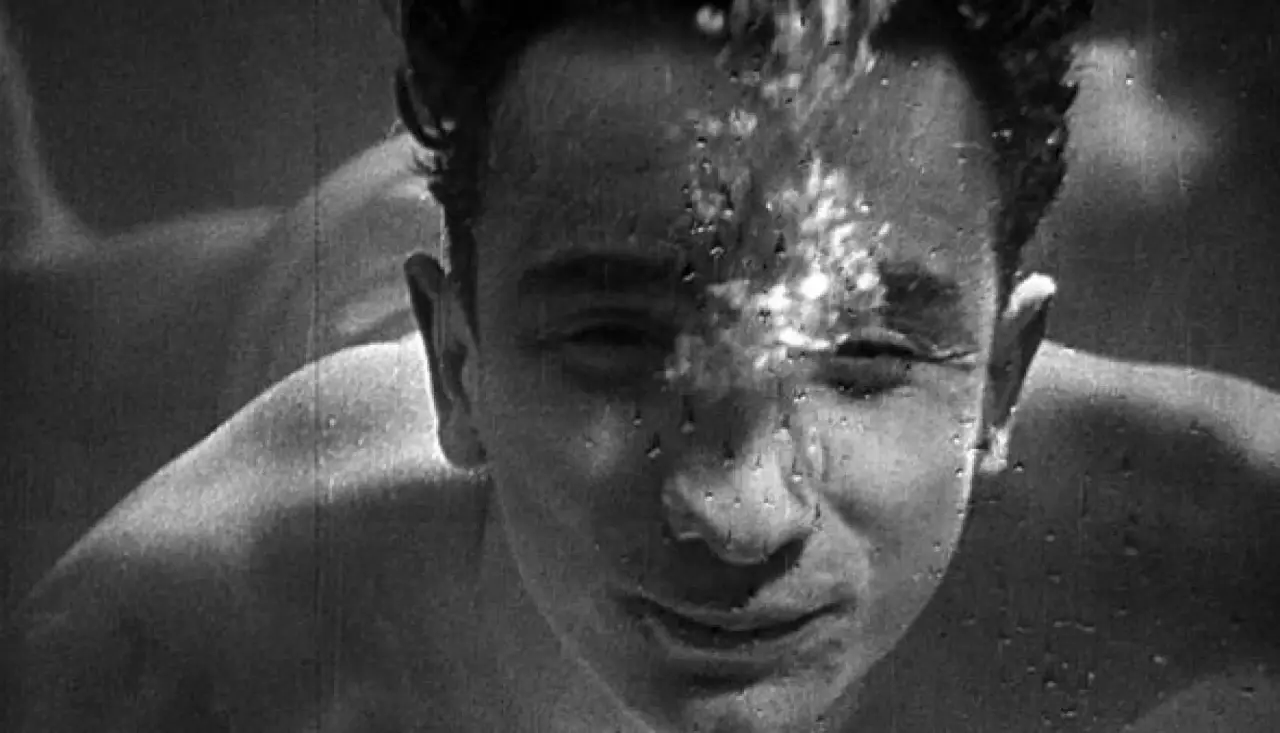
Jean Taris in his element. DP: Boris Kaufman.
A proto-Jean Painlevé exercise avant la lettre.